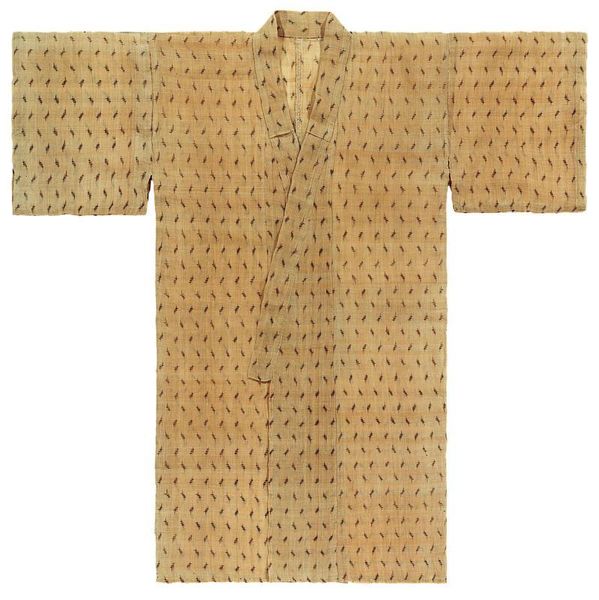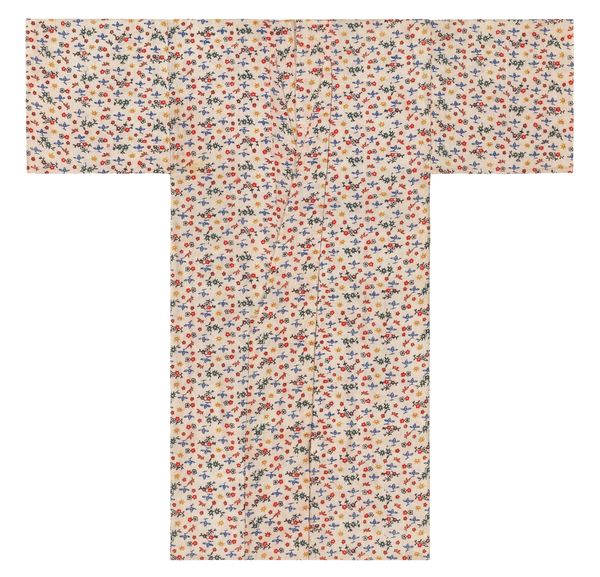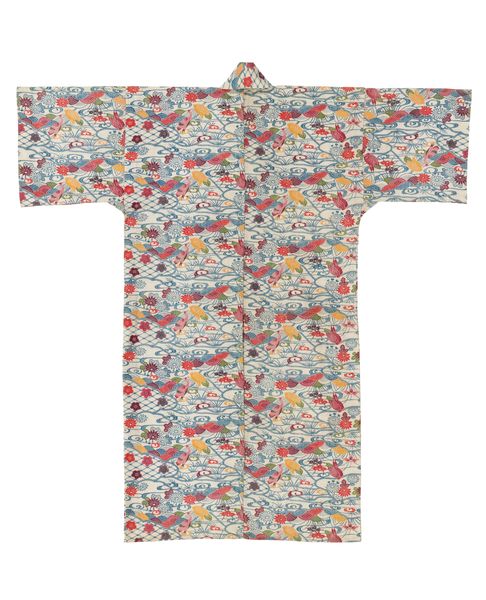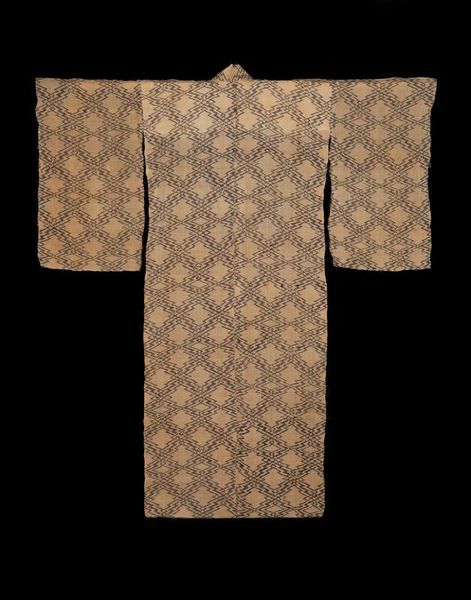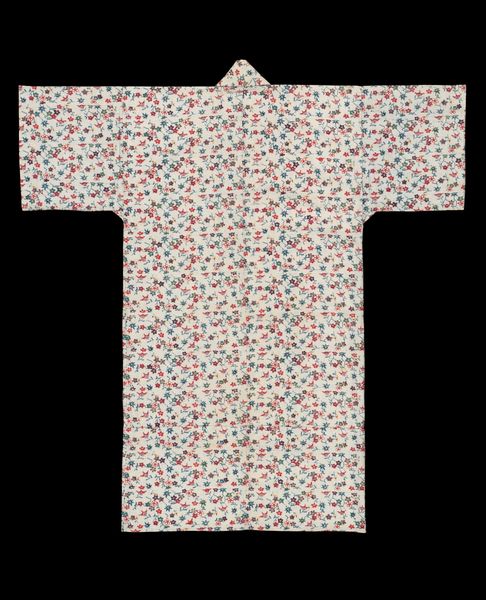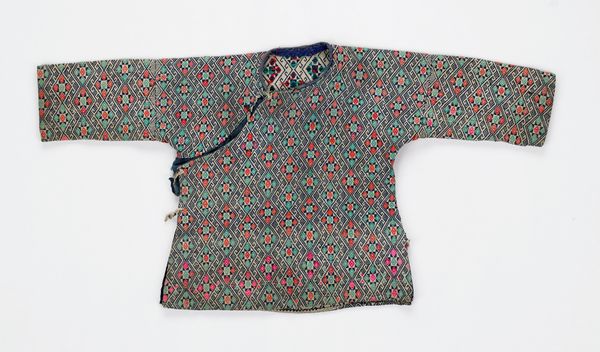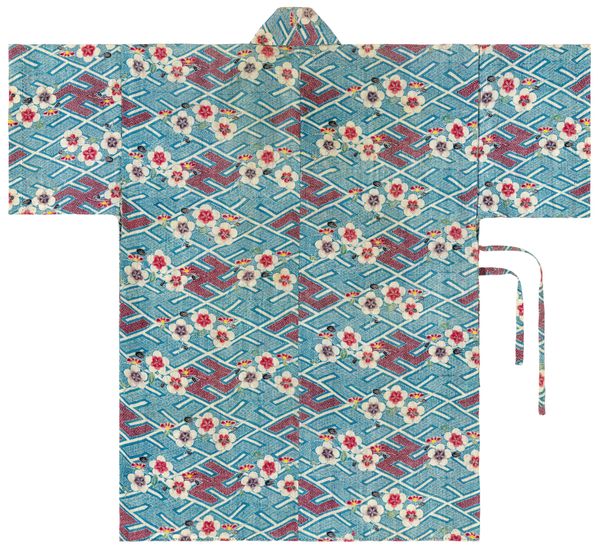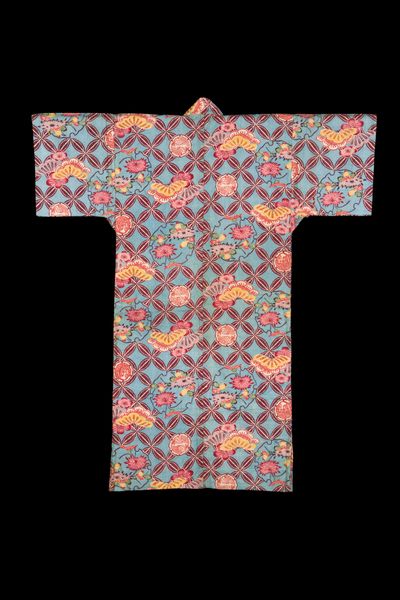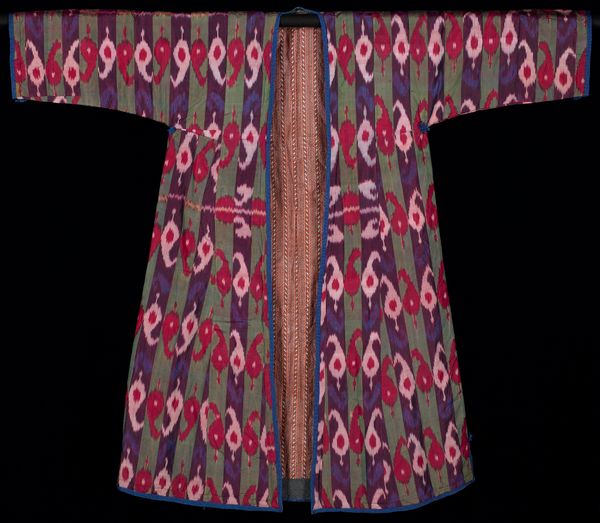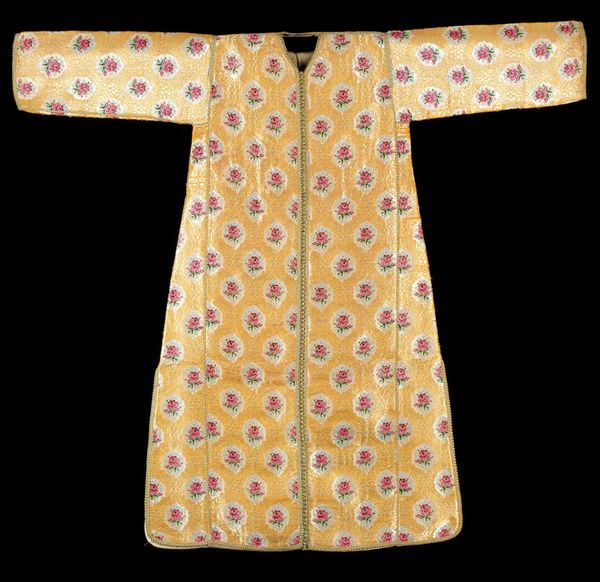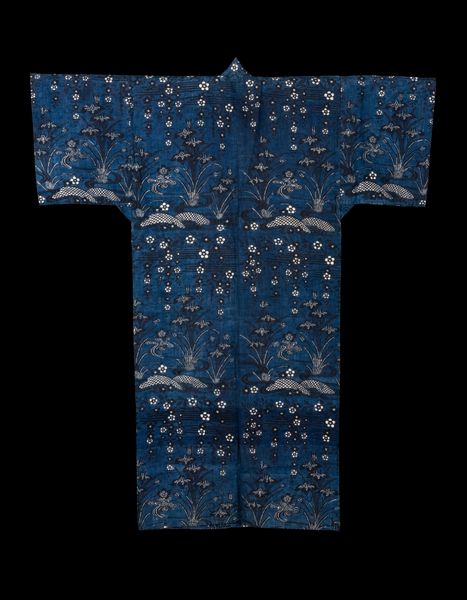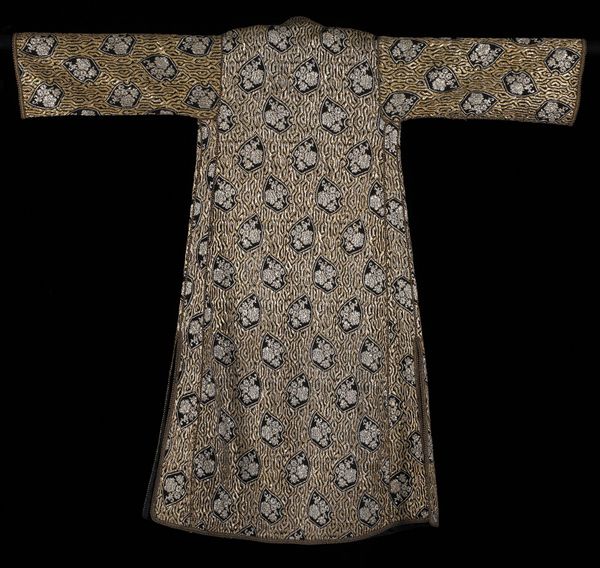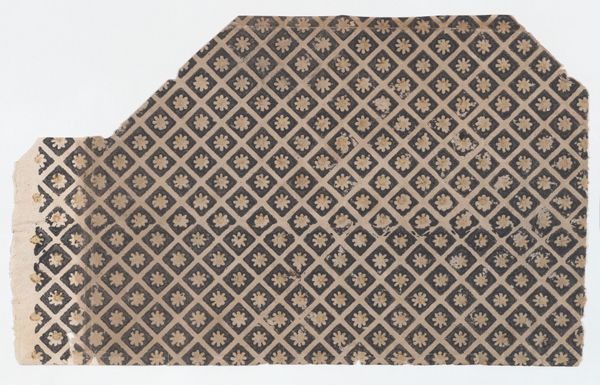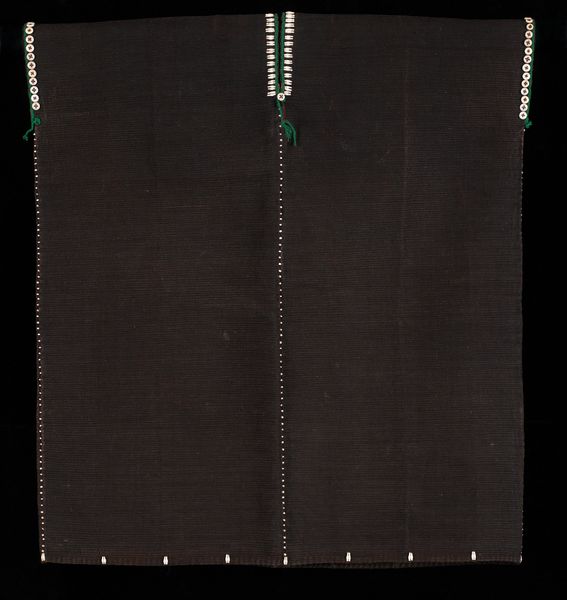
Yellow-ground kimono with plum pattern c. late 19th century
0:00
0:00
silk, textile
#
silk
#
asian-art
#
textile
#
fashion and textile design
#
hand-embroidered
#
fabric design
#
regular pattern
#
clothing photo
#
pattern repetition
#
textile design
#
imprinted textile
#
layered pattern
#
clothing design
Dimensions: 46 1/2 × 50 1/2 in. (118.11 × 128.27 cm) (overall)
Copyright: Public Domain
This is an anonymous yellow-ground kimono with plum pattern. Kimono, the traditional garment of Japan, is more than just clothing. It is a canvas which reflects cultural values, social status, and personal identity. Though the maker of this garment is anonymous, we can still consider the historical and cultural context of its creation. Consider how the choice of color, yellow, traditionally associated with royalty, might indicate the wearer's status. Note the plum blossoms, a motif symbolizing resilience and renewal, subtly yet powerfully woven into the fabric. The act of wearing a kimono is a performance of identity, a conscious presentation of self. Reflect on how a garment like this shapes not only the wearer's appearance, but also their comportment and sense of belonging within their community. This kimono is a testament to the enduring power of clothing to communicate complex narratives about who we are, and what we value.
Comments
minneapolisinstituteofart almost 2 years ago
⋮
Only royalty during the Ryūkyū Kingdom could wear bingata with yellow ground; after annexation by Japan in 1879, such restrictions were lifted. Still, these special garments were worn only for festive or ceremonial occasions. This garment has a kimono structure, visible in the detached sleeves and shorter, overlapping lapel. It has an intricate pattern of interconnected little flowers with accent colors in red, blue, and purple.
Join the conversation
Join millions of artists and users on Artera today and experience the ultimate creative platform.
